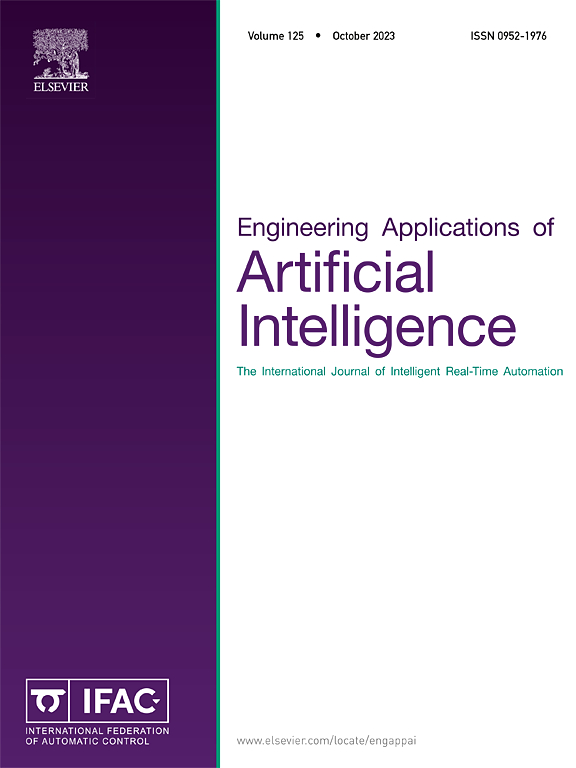A Convolutional Neural Network based model for daily motor activities recognition: A contribution for Parkinson's Disease
IF 7.5
2区 计算机科学
Q1 AUTOMATION & CONTROL SYSTEMS
Engineering Applications of Artificial Intelligence
Pub Date : 2025-04-02
DOI:10.1016/j.engappai.2025.110706
引用次数: 0
Abstract
Daily motor activities are affected by motor disabilities caused by Parkinson's disease (PD). Monitoring motor disabilities frequently observed in PD is difficult for physicians, as they are limited to the information observed or self-reported during routine consultations, resulting in subjectivity and limited assessment. Thus, it is necessary to evaluate more frequently and objectively, ideally in a continuous manner including daily life tasks. While wearable sensory devices, such as inertial sensors, and their applications are steadily growing, the advances in artificial intelligence studies have revolutionized their ability to extract deeply hidden information for accurate detection and interpretation of motor activities. However, further studies are required, mainly focused on PD. This study aimed to implement a deep learning (DL) based model for recognizing daily motor activities based on inertial data to contribute to PD. The model relied on a convolutional neural network (CNN) architecture, trained and tested on a created custom dataset. We further benchmarked our model against other popular DL frameworks. The dataset included inertial data captured from 18 patients while performing trivial quotidian tasks, such as walking, turning, sitting, and lying. We hypothesized that a DL model based on a CNN architecture could be an appropriate solution for modeling daily motor non-steady and steady-state tasks from a single inertial sensor. We measured an F1 score of 0.906 and an accuracy of 91.1 % on final testing with our optimized CNN model, being the tasks of standing and walking the most accurately recognized by the model. Future challenges should cover exploring attention-based models and increasing the dataset.

求助全文
约1分钟内获得全文
求助全文
来源期刊

Engineering Applications of Artificial Intelligence
工程技术-工程:电子与电气
CiteScore
9.60
自引率
10.00%
发文量
505
审稿时长
68 days
期刊介绍:
Artificial Intelligence (AI) is pivotal in driving the fourth industrial revolution, witnessing remarkable advancements across various machine learning methodologies. AI techniques have become indispensable tools for practicing engineers, enabling them to tackle previously insurmountable challenges. Engineering Applications of Artificial Intelligence serves as a global platform for the swift dissemination of research elucidating the practical application of AI methods across all engineering disciplines. Submitted papers are expected to present novel aspects of AI utilized in real-world engineering applications, validated using publicly available datasets to ensure the replicability of research outcomes. Join us in exploring the transformative potential of AI in engineering.
 求助内容:
求助内容: 应助结果提醒方式:
应助结果提醒方式:


